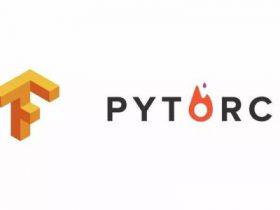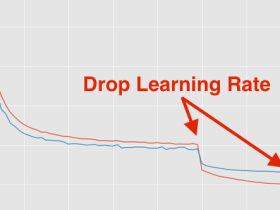pytorch代码如下:文章源自联网快讯-https://x1995.cn/3424.html
- # -*- coding: utf-8 -*-
- """
- Created on Wed Sep 5 09:10:52 2018
- @author: www
- """
- import sys
- sys.path.append('...')
- import numpy as np
- import torch
- from torch import nn
- from torch.autograd import Variable
- from torchvision.datasets import CIFAR10
- # 首先定义一个卷积块,其顺序是bn->relu->conv
- def conv_block(in_channel, out_channel):
- layer = nn.Sequential(
- nn.BatchNorm2d(in_channel),
- nn.ReLU(True),
- nn.Conv2d(in_channel, out_channel, 3, padding=1, bias=False)
- )
- return layer
- class dense_block(nn.Module):
- def __init__(self, in_channel, growth_rate, num_layers):
- super(dense_block, self).__init__()
- block = []
- channel = in_channel
- for i in range(num_layers):
- block.append(conv_block(channel, growth_rate))
- channel += growth_rate
- self.net = nn.Sequential(*block)
- def forward(self, x):
- for layer in self.net:
- out = layer(x)
- x = torch.cat((out, x), dim=1)
- return x
- # 验证输出是否正确
- test_net = dense_block(3, 12, 3)
- test_x = Variable(torch.zeros(1, 3, 96, 96))
- print('input shape: {} x {} x {}'.format(test_x.shape[1], test_x.shape[2], test_x.shape[3]))
- test_y = test_net(test_x)
- print('output shape: {} x {} x {}'.format(test_y.shape[1], test_y.shape[2], test_y.shape[3]))
- # 除了 dense block,DenseNet 中还有一个模块叫过渡层(transition block),因为 DenseNet
- # 会不断地对维度进行拼接, 所以当层数很高的时候,输出的通道数就会越来越大,参数和计算量也会越来越大,
- # 为了避免这个问题,需要引入过渡层将输出通道降低下来,同时也将输入的长宽减半,这个过渡层可以使用
- # 1 x 1 的卷积
- def transition(in_channel, out_channel):
- trans_layer = nn.Sequential(
- nn.BatchNorm2d(in_channel),
- nn.ReLU(True),
- nn.Conv2d(in_channel, out_channel, 1),
- nn.AvgPool2d(2, 2)
- )
- return trans_layer
- # 验证一下过渡层是否正确
- test_net = transition(3, 12)
- test_x = Variable(torch.zeros(1, 3, 96, 96))
- print('input shape: {} x {} x {}'.format(test_x.shape[1], test_x.shape[2], test_x.shape[3]))
- test_y = test_net(test_x)
- print('output shape: {} x {} x {}'.format(test_y.shape[1], test_y.shape[2], test_y.shape[3]))
- class densenet(nn.Module):
- def __init__(self, in_channel, num_classes, growth_rate=32, block_layers=[6, 12, 24, 16]):
- super(densenet, self).__init__()
- self.block1 = nn.Sequential(
- nn.Conv2d(in_channel, 64, 7, 2, 3),
- nn.BatchNorm2d(64),
- nn.ReLU(True),
- nn.MaxPool2d(3, 2, padding=1)
- )
- channels = 64
- block = []
- for i, layers in enumerate(block_layers):
- block.append(dense_block(channels, growth_rate, layers))
- channels += layers * growth_rate
- if i != len(block_layers) - 1:
- block.append(transition(channels, channels // 2)) # 通过transition 层将大小减半,通道数减半
- channels = channels // 2
- self.block2 = nn.Sequential(*block)
- self.block2.add_module('bn', nn.BatchNorm2d(channels))
- self.block2.add_module('relu', nn.ReLU(True))
- self.block2.add_module('avg_pool', nn.AvgPool2d(3))
- self.classifier = nn.Linear(channels, num_classes)
- def forward(self, x):
- x = self.block1(x)
- x = self.block2(x)
- x = x.view(x.shape[0], -1)
- x = self.classifier(x)
- return x
- test_net = densenet(3, 10)
- test_x = Variable(torch.zeros(1, 3, 96, 96))
- test_y = test_net(test_x)
- print('output: {}'.format(test_y.shape))
- # 数据预处理函数
- def data_tf(x):
- x = x.resize((96, 96), 2) # 将图片放大到 96 x 96
- x = np.array(x, dtype='float32') / 255
- x = (x - 0.5) / 0.5 # 标准化,这个技巧之后会讲到
- x = x.transpose((2, 0, 1)) # 将 channel 放到第一维,只是 pytorch 要求的输入方式
- x = torch.from_numpy(x)
- return x
- train_set = CIFAR10('./data', train=True, transform=data_tf)
- train_data = torch.utils.data.DataLoader(train_set, batch_size=64, shuffle=True)
- test_set = CIFAR10('./data', train=False, transform=data_tf)
- test_data = torch.utils.data.DataLoader(test_set, batch_size=128, shuffle=False)
- net = densenet(3, 10)
- optimizer = torch.optim.SGD(net.parameters(), lr=0.01)
- criterion = nn.CrossEntropyLoss()
- from datetime import datetime
- def get_acc(output, label):
- total = output.shape[0]
- _, pred_label = output.max(1)
- num_correct = (pred_label == label).sum().data[0]
- return num_correct / total
- def train(net, train_data, valid_data, num_epochs, optimizer, criterion):
- if torch.cuda.is_available():
- net = net.cuda()
- prev_time = datetime.now()
- for epoch in range(num_epochs):
- train_loss = 0
- train_acc = 0
- net = net.train()
- for im, label in train_data:
- if torch.cuda.is_available():
- im = Variable(im.cuda())
- label = Variable(label.cuda())
- else:
- im = Variable(im)
- label = Variable(label)
- # forward
- output = net(im)
- loss = criterion(output, label)
- # forward
- optimizer.zero_grad()
- loss.backward()
- optimizer.step()
- train_loss += loss.data[0]
- train_acc += get_acc(output, label)
- cur_time = datetime.now()
- h, remainder = divmod((cur_time - prev_time).seconds, 3600)
- m, s = divmod(remainder, 60)
- time_str = "Time %02d:%02d:%02d" % (h, m, s)
- if valid_data is not None:
- valid_loss = 0
- valid_acc = 0
- net = net.eval()
- for im, label in valid_data:
- if torch.cuda.is_available():
- im = Variable(im.cuda(), volatile=True)
- label = Variable(label.cuda(), volatile=True)
- else:
- im = Variable(im, volatile=True)
- label = Variable(label, volatile=True)
- output = net(im)
- loss = criterion(output, label)
- valid_loss += loss.item()
- valid_acc += get_acc(output, label)
- epoch_str = (
- "Epoch %d. Train Loss: %f, Train Acc: %f, Valid Loss: %f, Valid Acc: %f, "
- % (epoch, train_loss / len(train_data),
- train_acc / len(train_data), valid_loss / len(valid_data),
- valid_acc / len(valid_data)))
- else:
- epoch_str = ("Epoch %d. Train Loss: %f, Train Acc: %f, " %
- (epoch, train_loss / len(train_data),
- train_acc / len(train_data)))
- prev_time = cur_time
- print(epoch_str + time_str)
- train(net, train_data, test_data, 20, optimizer, criterion)
继续阅读











评论